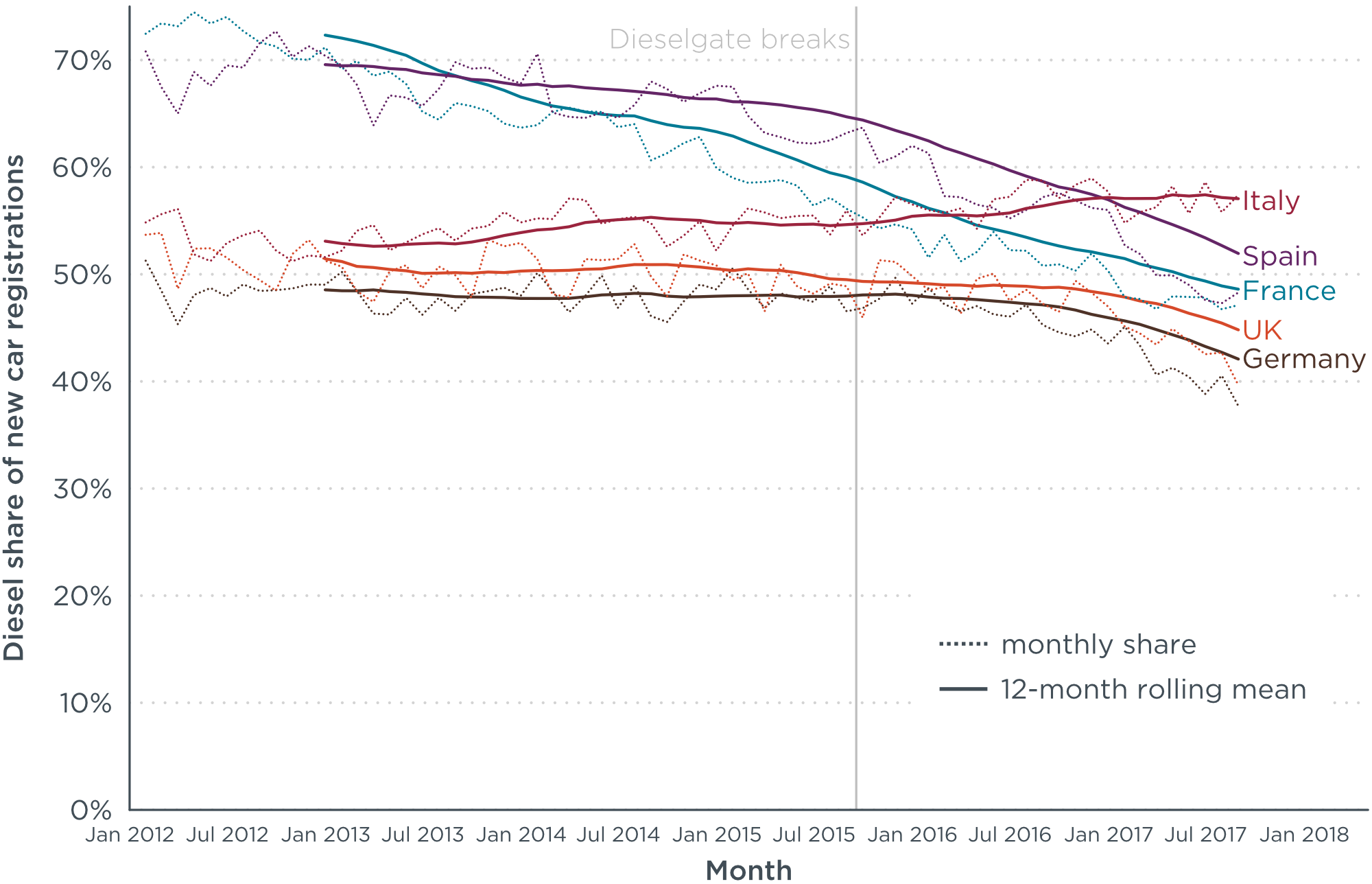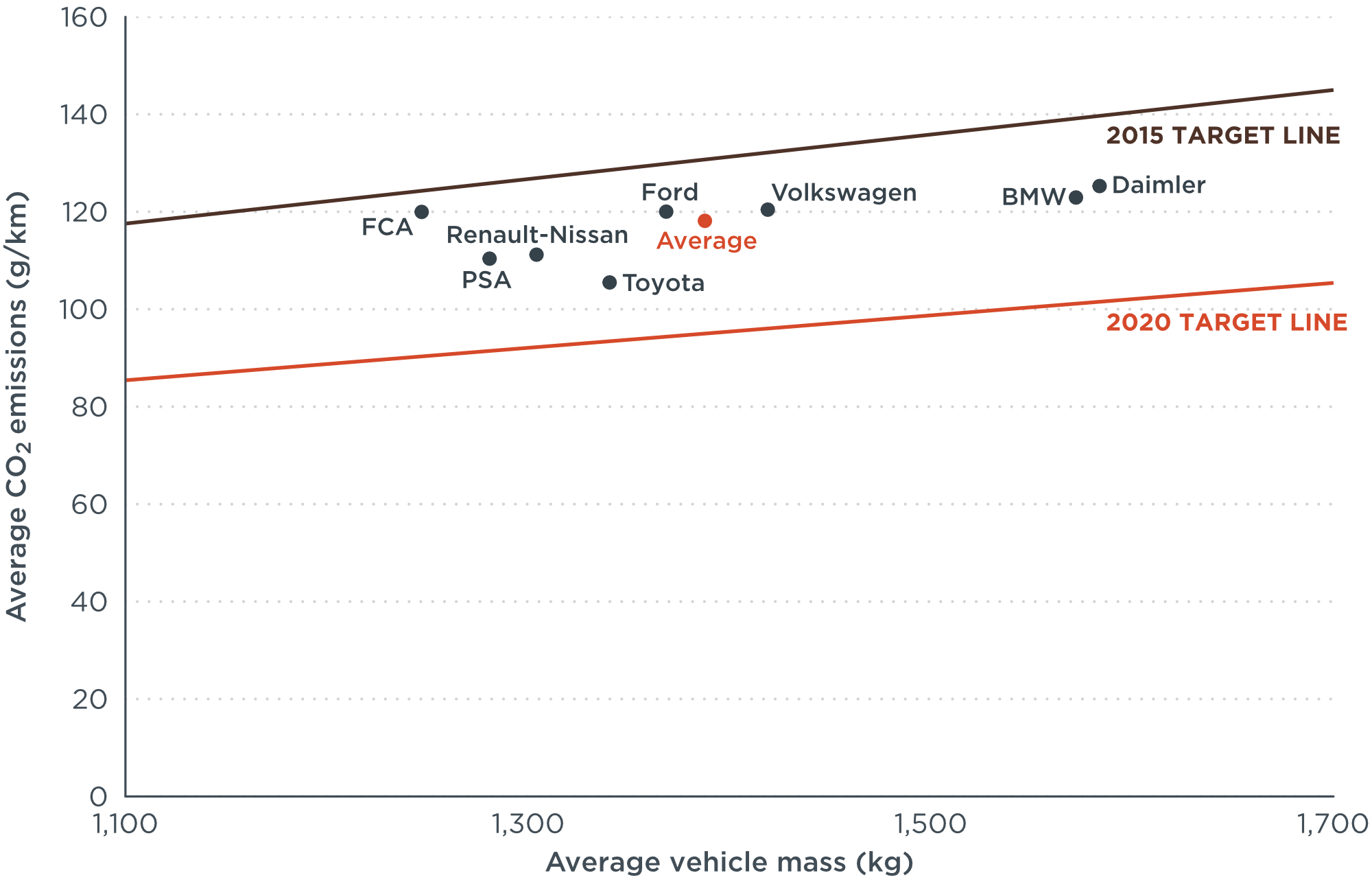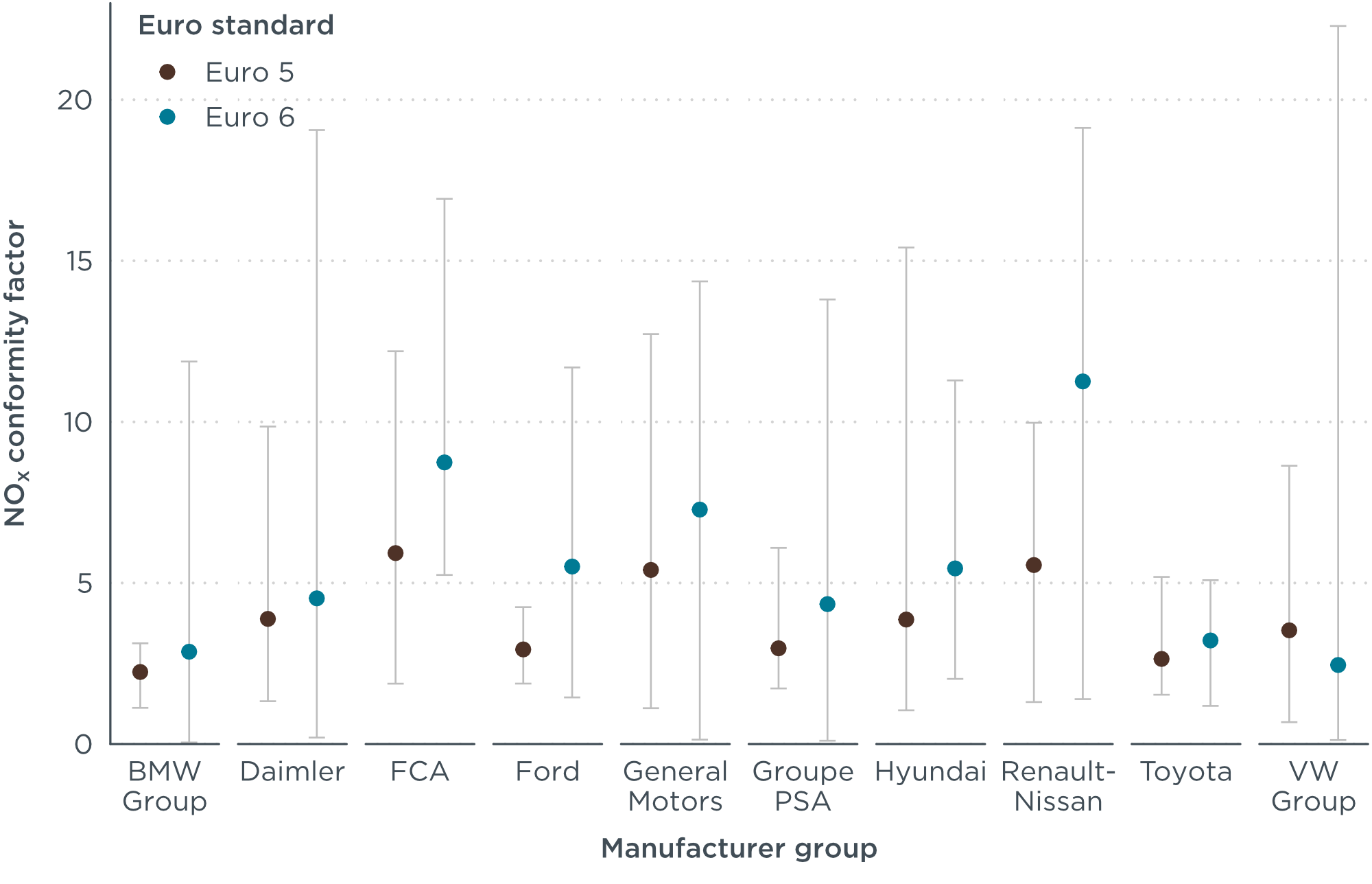Lessons learned from Sweden’s electric vehicle rollercoaster
Blog
Italy’s car market needs to make a U-turn
Between minuscule electric vehicle (EV) sales, growing diesel shares, and Italian carmakers’ struggle to curb carbon dioxide (CO2) and nitrogen oxide (NOx) emissions, Italy seems to be heading in the wrong direction. Moreover, the country seems unprepared to tackle pressing air pollution and climate change issues. This does not bode well for the country that ranks third in Europe in terms of car production.
The first warning sign that Italy would go a different route than most European car markets came in the late 2000s. While pioneers in electric mobility, like Norway and the Netherlands, were starting to push for EVs, Italy saw registrations of compressed natural gas (CNG) and liquefied petroleum gas (LPG) vehicles skyrocket, peaking at approximately 22% in 2009. While CNG and LPG cars are now ebbing away, they still accounted for 7.8% of 2016 new car registrations in Italy.
The popularity of CNG and LPG cars was driven by purchasing incentives, ranging from 1,500 to 3,500 euros in 2009, and an additional scrappage bonus of up to 1,500 euros. Electric cars, while eligible for the same incentives, were less popular and have remained in the shadows of gas-powered cars. Plug-in hybrid electric vehicles and battery electric vehicles made up less than 0.2% of new car registrations in 2016, placing Italy second-to-last in western Europe in terms of EV uptake. Fiat Chrysler Automobiles (FCA), the largest Italian carmaker at roughly one-third of the domestic new car market, currently has no EVs on offer.
CNG and LPG provide some advantages over conventional gasoline and diesel powertrains. CNG and LPG vehicles emit less CO2 than a comparable gasoline car. However, setting aside that fugitive natural gas emissions could more than offset those savings for CNG cars, these technologies are hardly futureproof: They do little to prepare Italian car plants for the production of zero emission powertrains and do not incentivize investments in the charging infrastructure needed for an electric fleet. The focus on CNG and LPG vehicles may therefore make it harder for Italian carmakers and car buyers to transition to EVs down the road.
The second warning sign that Italy is heading in the wrong direction is displayed in the chart below. We plot monthly diesel shares of new car registrations from January 2012 to July 2017 in the five major European vehicle markets, which together accounted for three quarters of 2016 new car registrations in the EU. Because monthly data are quite noisy, we added 12-month rolling averages to even out monthly and seasonal trends.

The 12-month rolling diesel share declined by 5 to 12 percentage points in France, Germany, Spain, and the United Kingdom (UK) since the news about Dieselgate broke in September 2015, in part because of diesel bans in European cities. Italy, however, saw a 2.3 percentage point increase during the same time. The reasons for this increase remain a mystery, though fewer and less stringent bans of diesel cars in Italian cities, compared to other European cities, may play a role in this development. While some carmakers still claim that diesel cars are needed to comply with CO2 standards, a recent study shows that hybrid electric vehicles offer a more cost-effective option for CO2 mitigation.
The last warning sign out of Italy is that FCA is struggling to reduce its cars’ CO2 and NOx emissions. We recently compared carmakers in terms of progress toward meeting the EU’s 2021 CO2 target, which requires manufacturer groups to limit average new car CO2 emissions to 95 grams per kilometer (g/km). The figure below shows that FCA barely managed to comply with the 2015 target and is trailing behind other manufacturer groups.

A recent study indicates that FCA isn’t faring any better on NOx emissions. The study compiled on-road measurements of diesel car NOx emissions conducted by various European governments and testing organizations. The figure below plots these measurements in terms of average NOx conformity factors by emission standard for the ten largest manufacturer groups in Europe. Conformity factors are calculated as the measured on-road NOx emissions relative to the Euro 5 limit of 180 milligram per kilometer (mg/km) and the Euro 6 limit of 80 mg/km.

The figure shows that FCA Euro 5 cars have the highest on-road NOx emissions of the ten manufacturer groups. The picture does not look much better for Euro 6 cars: The admittedly small sample (only 5 measurements were taken) indicates that FCA had the second highest NOx emission levels.
These results are somewhat unsurprising given FCA’s troubles with regulators. The U.S. Environmental Protection Agency filed a complaint against FCA for installing defeat devices in some of its vehicles. The ongoing dispute between the German transportation ministry and FCA also centers around alleged use of defeat devices. FCA certainly is not the only manufacturer group accused of cheating on emissions tests, but these disputes add further evidence that Italian regulators and FCA should consider piloting the Italian car market away from diesel.
The situation in Italy is not hopeless despite these three warnings signs. For one, Italy has the engineering talent to turn on a dime. Fiat leads the ranking of European Car of the Year awards with nine first-placed models since the award was established in 1964. FCA is also finally starting to take EVs seriously (despite the CEO’s eccentric views) and plans to electrify half of its models by 2022. Meanwhile, Italians are buying (non-plug-in) hybrid electric vehicles at a faster rate than German and British consumers, indicating that there is appetite for electrified powertrains. This newfound interest needs policy support, while tax advantages of diesel fuel should be phased out. Italian cities also need to disincentivize dirty vehicles from entering city centers in order to reduce air pollution to safe levels. There is no doubt that Italy is heading in the wrong direction, but it’s not too late for a U-turn.
